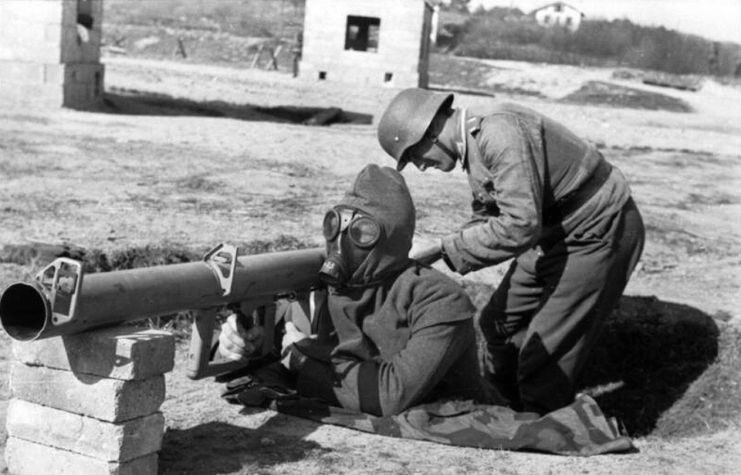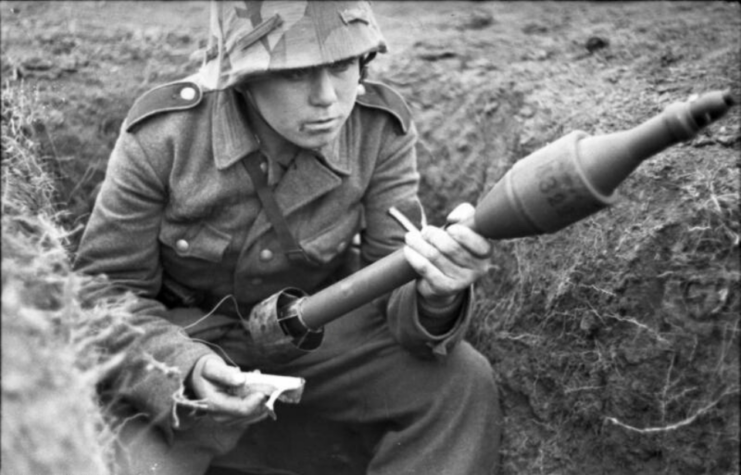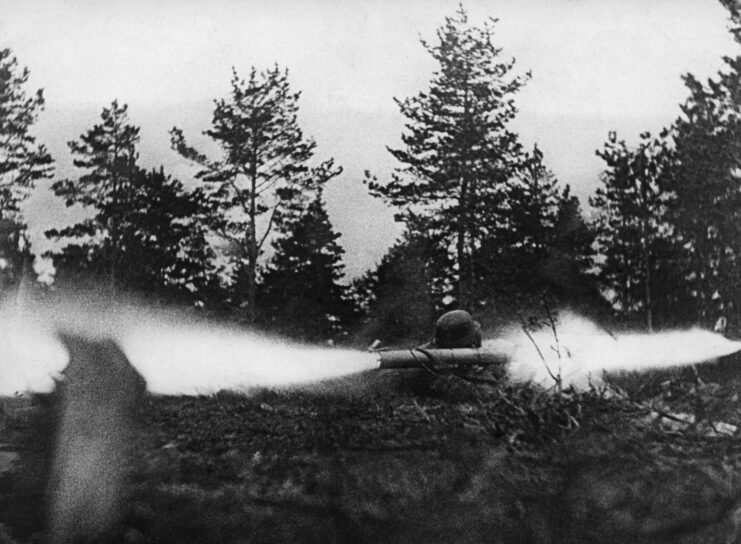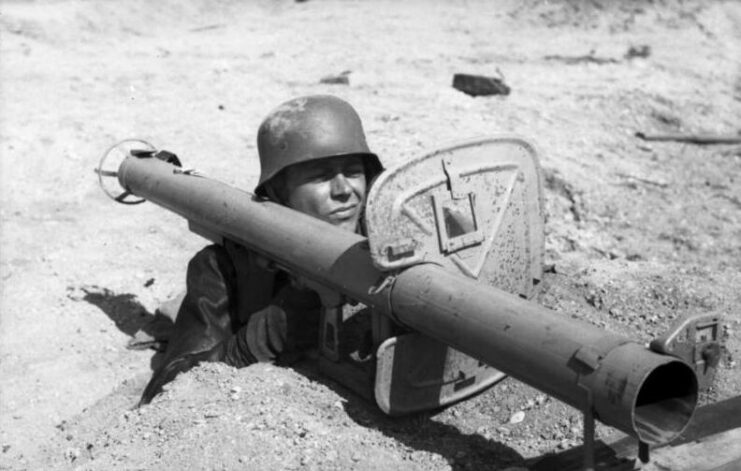Panzerschreck: Germany’s Much More Powerful Version of the American Bazooka
The Panzerschreck was an anti-tank weapon designed and primarily used by Germany during World War II. Officially known as the Raketenpanzerbüchse 54, it was based on the US bazooka, and was one of two rocket launchers operated by the German Army. Its effectiveness in combat earned it the nickname Panzerschreck, translating to “Tank Terror.”
Development of the Panzerschreck

During the Tunisian Campaign in North Africa, German forces captured American bazookas, which were taken back to Germany and used as the inspiration for the Panzerschreck. The 88 mm weapon was significantly larger than the 60 mm bazooka, allowing it to penetrate thicker armor.
The RPzB. Gr. 4312 rocket, used by the 88 mm Raketenwerfer 43 anti-tank rocket launcher, was chosen for the Panzerschreck. However, compared to the former, the German bazooka had a lengthened rocket necessitating a longer weapon, so an electric firing system was chosen.
Compared to American bazookas, the RPzB rockets weren’t extinguished in the tube – instead, they kept burning for up to two meters after being fired. This produced a great deal of heat, so protective gloves, a poncho and a gas mask were provided to operators. A blast shield was fitted in February 1944.
The rockets also produced a great deal of smoke – so much so that it was called Ofenrohr, meaning “stove pipe.” A side effect of this was that their operators could be easily spotted by nearby Allied forces, meaning they had to continually change position.
Panzerschreck specs

The Panzerschreck was lightweight, weighing 24 pounds when empty. The rocket added just 7.25 pounds. The weapon was only 65 inches in length and could be operated by a single soldier, although a second usually assisted with loading while the first aimed and fired.
Primarily firing the 88 mm RPzB Gr. 4312 rocket and its 4322 variant, the Panzerchreck had a muzzle velocity of 360 feet per second and an effective firing range of 490 feet. Each unit cost 70 Reichsmarks, with a total of 314,895 being built over the course of the Second World War.
Two variants were produced: the RPzB 54 and RPzB 54/1. The difference between the original and the 54/1 was a shortening of the length and the use of an improved rocket. This increased the Panzerschreck’s firing range to 590 feet.
Testing the weapon’s effectiveness

The Panzerschreck entered service with the German Army in 1943, and its effectiveness was soon made clear. This wasn’t just shown in combat, but also in tests conducted by the Germans during the war, as well as by Finland on provided units and the US after the conflict.
Tests were performed on Rolled homogeneous armor (RHA) and Face-hardening armor (FHA). RHA is a type of vehicle armor made of a single steel composition that’s been hot-rolled, improving the material’s characteristics. This type of armor was used extensively on tanks during the Second World War and fell out of use following its conclusion. FHA sees the outside layer of a metal sheet hardened while the center remains soft.
In tests conducted by the German Army, the Panzerschreck performed extremely well against RHA at various angles. In a Finnish test, it penetrated FHA at 30 degrees, penetrating to 100 mm. A later American one at 90 degrees saw the weapon effective up to 216 mm. A second saw the Panzerschreck penetrate 210 mm of a combined FHA and RHA armor at 90 degrees.
Appearance on the battlefield

The German Army’s tactics later in the war saw Panzerschreck and Panzerfaust teams located in staggered trenches roughly 377 feet apart. This allowed them to attack oncoming tanks from multiple directions at various distances. Those armed with anti-tank weapons would fire at the thinner side armor of Allied vehicles.
To protect their tanks, the Allies would place sandbags, metal mesh/netting, logs or spare tracks along the sides. However, these ultimately proved ineffective against both the Panzerschreck and Panzerfaust.
In 1944, Germany supplied Finland with Panzerschrecks, which they used against Soviet Red Army. Finnish soldiers changed the name to Panssarikauhu, a translation of the German moniker.
More from us: Panzerfaust 3: Germany’s Modern Tank-Piercing Grenade Launcher
Germany also supplied Panzerschrecks to Italy and Hungary. With the latter, the weapon was used during Operation Spring Awakening, the late German offensive against Allied forces on the Eastern Front.
The post Panzerschreck: Germany’s Much More Powerful Version of the American Bazooka appeared first on warhistoryonline.
Post a Comment
0 Comments